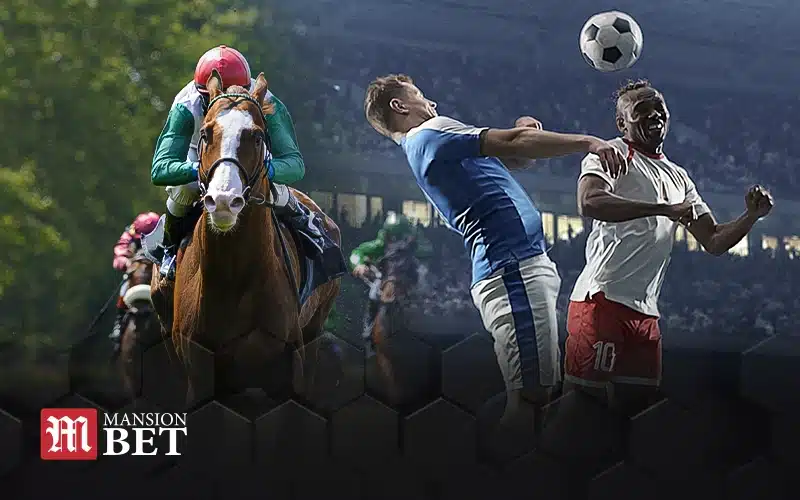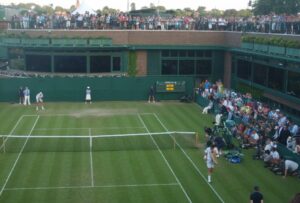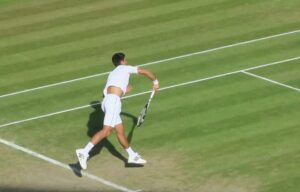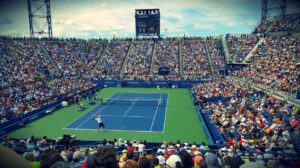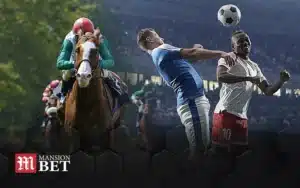Throughout the course of the tennis season, the four Major events – the Australian Open, the French Open, Wimbledon and the US Open – are each played on different surfaces.
Both the Australian and US events take place on outdoor hard courts, while during the French Open attention shifts to clay courts.
Wimbledon, the oldest tennis tournament in the world, meanwhile, takes place on grass.
These surfaces can impact how players play and some surfaces naturally suit some players better than others.
Here is a look at what styles of play each surface encourages and how this suits different individuals.
Neutral hard court the most consistent of the surfaces
The ATP and WTA seasons begin on hard courts with the Australian Open at Melbourne Park and the surface also comes into play in the final Major of the season – the US Open.
Typically made of asphalt or concrete, hard courts rank in the middle when it comes to the speed that the ball travels but they do typically encourage bounce and longer rallies.
The beauty of hard courts is they are pretty neutral and therefore it can reward a range of playing styles, from those reliant on strong groundstrokes to those whose game involves plenty of spin.
It is therefore difficult to spot patterns with regards to exactly which players rise to the top on these courts, although Novak Djokovic is one who certainly makes the most of the surface with nine Australian Open and three US Open titles to his name.
Iconic grass favours serve-and-volley specialists
Grass is the oldest and most iconic of tennis surfaces, although the expense of building and maintaining grass courts means they have become few and far between.
The jewel in the crown of the tennis season is undoubtedly the Wimbledon Championships, which first took place back in 1877.
The grass courts like those found at Wimbledon typically favour players who have big serves.
And although it is less popular now, those who champion the serve-and-volley approach – a style of play involving players moving close to the net to play an attacking volley immediately after serving – love to play on grass.
A modern example of this kind of player is Maxime Cressy, although the likes of Roger Federer, Peter Sampras and Martina Navratilova have also played in this way in years gone by.
Grass is also a more slippery surface, meaning the ball often keeps low, so bounce is less common.
Clay the slowest surface of them all
Clay courts take centre stage around May and June each year with the French Open in Paris the surface’s Major event.
Unlike grass which often benefits those who like to play closer to the net, clay courts tend to suit those who like to play on the baseline and have strong ground strokes.
It is the slowest of all of the surfaces, meaning timing is often more important and that means big rallies can often build up.
The undisputed ‘King of Clay’ is Spaniard Rafael Nadal, who has won the French Open a record 14 times throughout his career.
Given that long rallies are common on clay, players who thrive on the surface are usually athletic and have plenty of stamina.
Nadal, for example, operates from behind the baseline and plays with heavy topspin groundstrokes, often forcing his opponents further back in their own side of the court.
